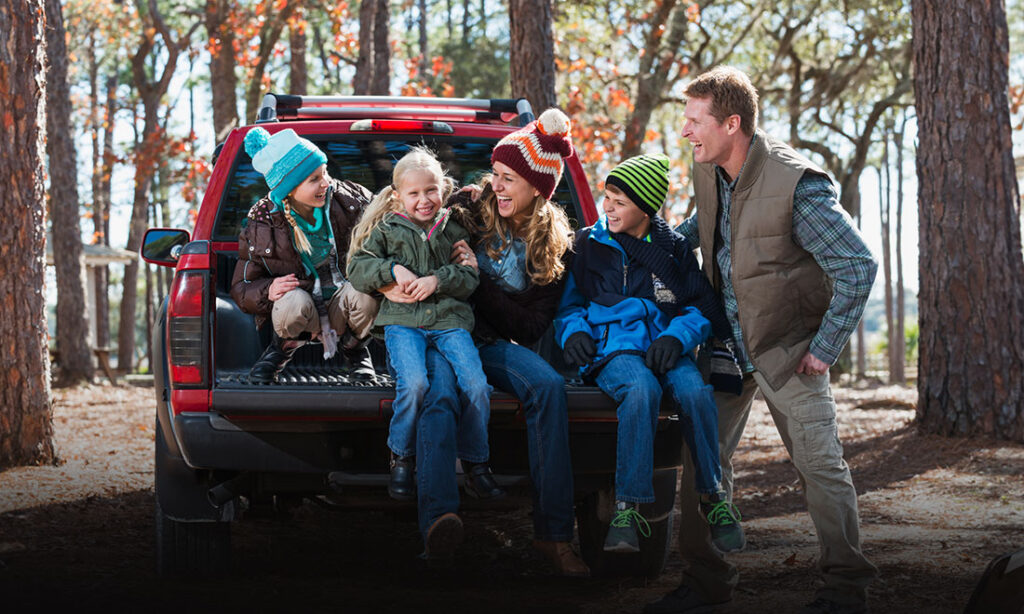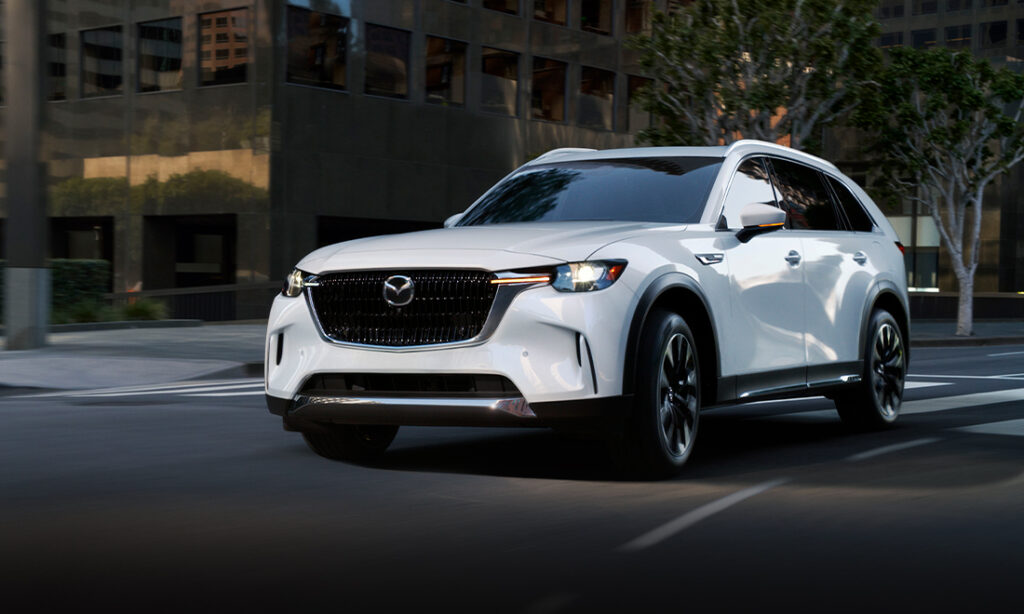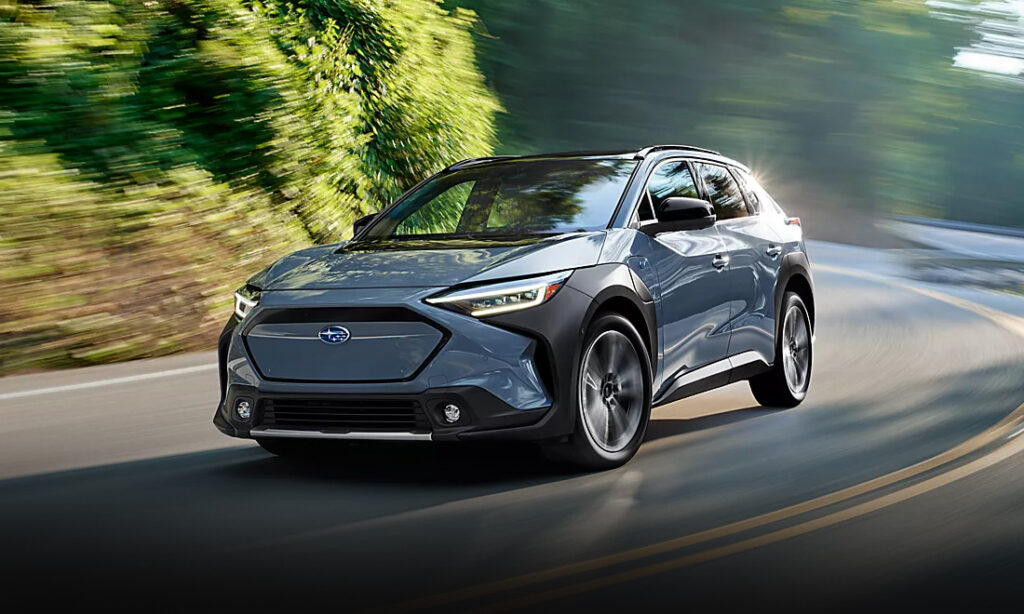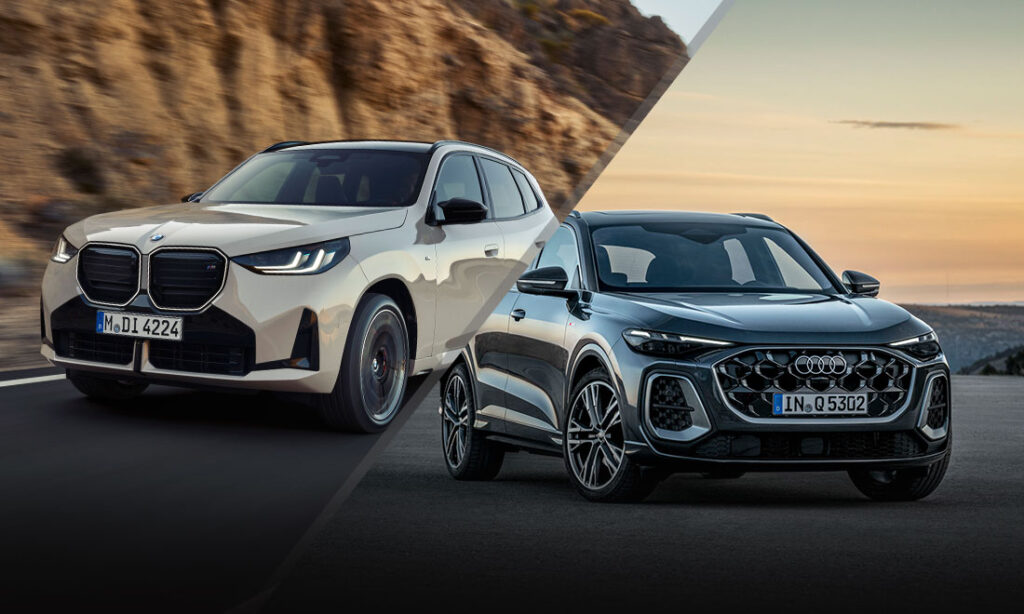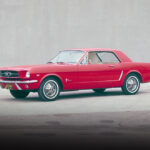2025 Jeep Gladiator vs 2025 Toyota Tacoma
Toyota Tacoma vs Jeep Gladiator: We Compare performance, towing, comfort, and features to find the best mid-size truck for your off roading needs.
Off Road Pickups Go Head-to-Head
They may look like opposites. The Tacoma is the latest in a long lineage of the most dependable mid-size trucks in its class, and the Gladiator is a Jeep Wrangler which adds a truck bed attached to the back for some added versatility to its off-road chops.
But which combination of dimensions and maximum possible bed space is the right choice for the person who just has to have a mid-size truck?
Specs
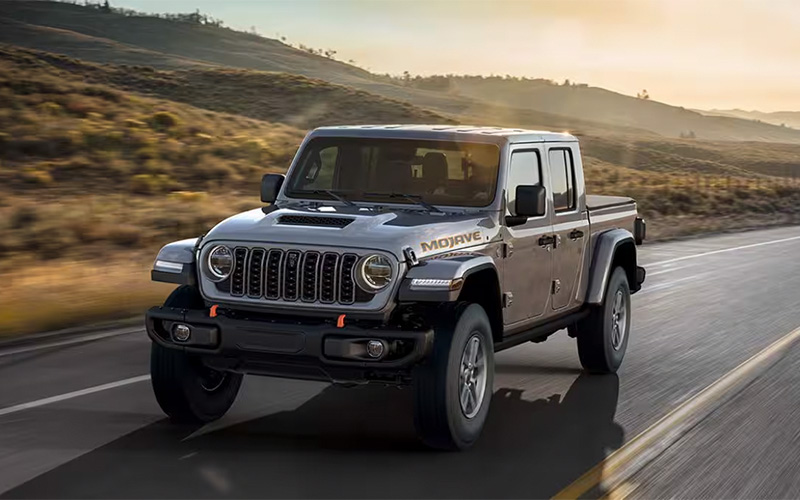
The Gladiator’s 3.6-liter Pentastar V8 is capable enough with 285 horsepower and 260 lb-ft of torque. It tows up to 7,700 lbs, depending on the outfit, while bringing a combined 19 MPG. The 4xe Gladiator will be making its debut soon, and while the Gladiator 4XE is not ready at the time of writing, it’s safe to assume we will be getting the same 376-hp PHEV powertrain seen in the Wrangler.
On the Tacoma side, the 2.4-liter straight-ICE turbo four-cylinder powertrain is a solid choice. It makes 278 horsepower and 317 lb-ft of torque, enough to tow 6,500 lbs without too much fuss. You’ll be generating fuel economy of around 23 MPGs combined when unladen all the while. Paired with an eight-speed automatic gearbox, it matches the Jeep and its Pentastar quite well aside from the lower towing spec.
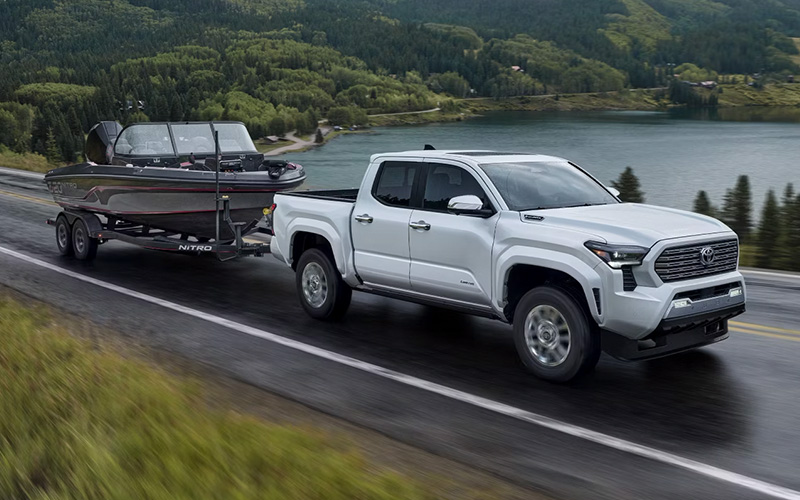
Toyota is earlier to the hybrid party than Jeep. Since 2024, the Tacoma has featured the i-FORCE MAX hybrid drivetrain. It adds a 1.87 kWh, 288V nickel-metal hydride battery, and 48-horsepower electric motor to bring power levels to 326 horses and 465 lb-ft of near-instant torque.
For now, the advantage must go to the Toyota Tacoma, apart from the towing the Tacoma offers more options and an already available hybrid powertrain.
Comfort and Interior

On the face of it, these are two very comfortable, decently spacious trucks with good bed space and solid interior upholstery. On closer inspection, the real nitty-gritty is even more interesting. Neither has the biggest bed in the world. The Gladiator measures 60.3 inches or just over five feet long, and the Tacoma gives you the option of a five-foot or a six-foot bed, depending on the configuration. A Gladiator’s bed can hold 1,725 lbs. of cargo capacity compared to up to 1,685 lbs in the Tacoma. Apart from bed length, there’s not much between them.
Inside, the Gladiator offers 38.3 inches of rear legroom—significantly more than the Tacoma’s 32.6 inches of legroom. In a category Toyota usually crushes without even trying, the Gladiator pulls off a surprising upset. Old-fashioned cloth upholstery does just fine for comfort in most cases and remains through the trim levels. Only at the Rubicon X, starting at $61,695, do you get premium leather.
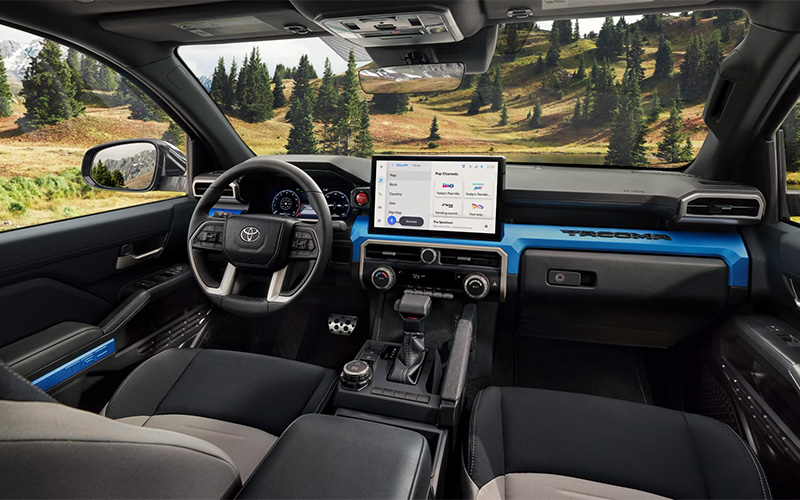
On the Toyota team, the interior might be smaller, but the quality of the materials and the general build quality are better. The standard XtraCab layout seats four people, while the double cab seats five. Like the Gladiator, cloth seats round off the range the option of soft-touch ActiveX vegan leather differentiates the Tacoma from the Gladiator’s seat upholstery. In the Jeep, you jump straight from cloth to leather abruptly at the trim range’s top end, while Toyota simply doesn’t offer leather at all.
Though the Jeep adds leather to the top of the range and is far less cramped in the back, the dedication to quality and the general fit and finish of a Toyota is pretty hard to beat.
Trims and Features
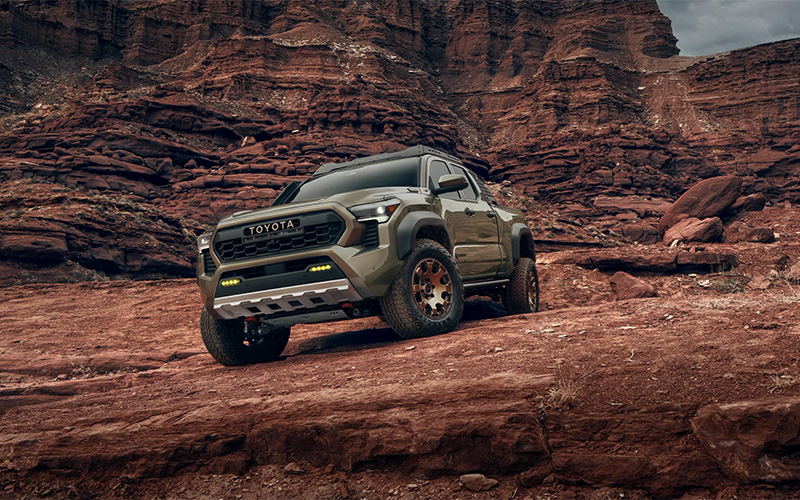
Both trucks have ample center screen size, driver assistance features, and the option of premium audio systems. You’d expect that from the average modern mid-size pickup.
The base trim Tacoma offers the choice of an 8-speed automatic transmission, 17-in alloy wheels, an 8-inch infotainment screen, and 6 speaker audio system. Moving up the trim options, the TRD Sport has an optional 14-inch infotainment screen, a premium JBL sound system, and 18-inch wheels. The TRD Pro is the offroad brother to the TRD Sport and it offers sport-tuned suspension, 17-inch wheels, all-terrain tires, underbody skid plates, and Bilstein remote-reservoir suspension dampeners. The top-of-the-line Trailhunter comes with hybrid power, an available 14-inch infotainment system, a JBL premium sound system, painted 18-inch alloy wheels, rock rails, OME Shocks, and an ARB bed rack to accommodate camping features such as a rooftop tent.
The Tacoma and Gladiator are defined by their off-road equipment. It’s an area where both trucks shine. Jeep’s Selec-Terrain traction management system and four-wheel-drive capability have been the toast of the industry for years now. Meanwhile, Toyota’s Multi-Terrain Select system is pretty proficient in itself.
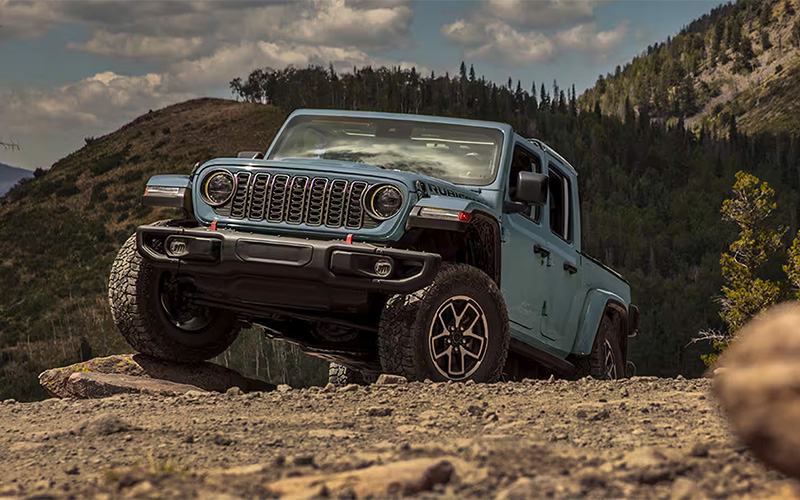
Across the entire Gladiator lineup, the UConnect 5 system shows how nice an infotainment system can be, with a 12.3-inch screen along with great connectivity for Apple and Android devices. The base sport trim offers a cloth interior but unfortunately, Jeep has stopped offering the manual gearbox. Moving up the trims, the trail-focused Rubicon offers a cloth interior and off-road upgrades like an electronic sway bar disconnect, locking rear differentials, and 33-inch all-terrain tires. At the top is the Rubicon X, which offers front power seats, Alpine premium stereo, and a leather interior.
But overall, the Tacoma is far more refined in its on-road manners than the Gladiator. Your preference between the two comes down to the use case. Are you primarily driving on the road with occasional off-road jaunts? Or are you all in for off-roading?
Verdict
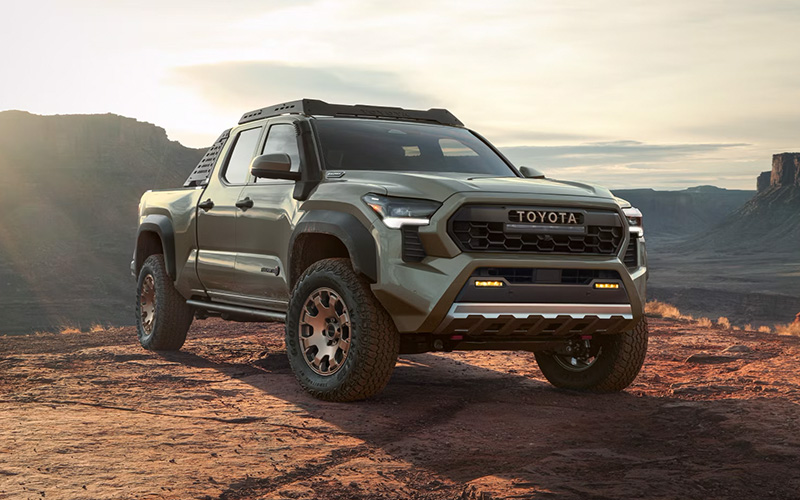
If you live on a rural plot of land where the driveway is literally a stretch of dirt trails but still need an occasional hauler/grocery runner, the Gladiator is a good choice. Especially if you already like what the Wrangler has to offer and want to do more towing and hauling.
However, at the end of the day, Tacoma is the better truck by almost every other metric. It comes with a wider variety of options for on-and-off road, and the interior options, powertrain choices, and better on-road manners make the Tacoma the better choice.


